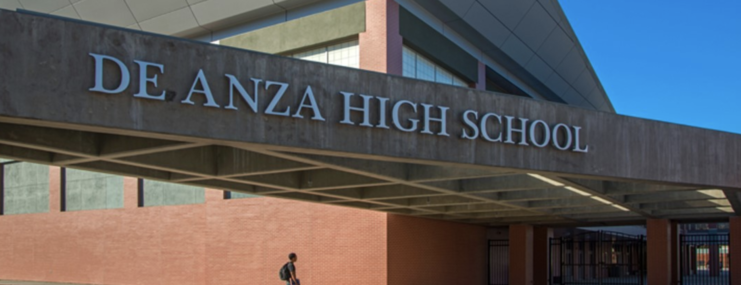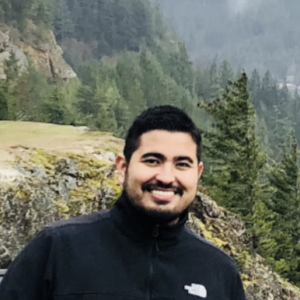
Overcoming Self Doubt as a Department Chair to Build a Culture of Learning
I had no idea how I was going to pull through last year as both a department chair and instructional leadership team (ILT) member for the first time. I doubted myself. Not only was it my first time in this role, but I was also filling the shoes of a previous leader who had retired, and we were right in the middle of a global pandemic. Lucky for me, it was also the first year our school partnered with Lead by Learning to help us develop our school goals and leadership.
At the beginning, I was concerned about the direction I wanted my department to take. At our first Lead by Learning meeting, we were challenged to choose an area to focus on to increase opportunity for Public Learning and foment the academic identity of our students of color at De Anza High School. With this focus in mind, I decided that we would dedicate our work towards creating content in our department that would focus more on being culturally relevant to increase student engagement in language courses.
But then self doubt crept in:
- Do I even fit in this group of experienced ILT members?
- Is this a goal everyone will be on board with?
- Can I successfully convey the importance of Public Learning to my department?
- Am I even sure of what Public Learning is and how Public Learning looks?
During the initial department meetings, I could not shake off the feeling of inadequacy. I attempted to come up with ways I was using Public Learning in my classroom to show my colleagues but following those meetings, I failed to see others trying those strategies in their own classrooms. The data was showing me that something wasn’t working, but I could not even identify where I needed to get started.
Then we had our monthly meeting with Lead by Learning, and as a Public Learner, a colleague shared their wondering and dilemma, “How can I get my group of adult learners to become more curious?”
As I heard his question, my eyes opened wide! Their question resonated with the exact difficulty I was having. From hearing this colleague share and seeing his data, everything came to me. I wanted our department to become curious about student engagement, about what it is to be culturally relevant, and about the tools we use to collect, measure, and interpret data to inform our instruction about those objectives.
Now that my goal was clearer, I was struggling to answer the question, “How?” I decided to schedule another coaching meeting with my Lead by Learning facilitator and explained that I needed to rethink the way I was approaching my goal to see more curiosity from the department. She then did her magic and encouraged me to reflect on this new direction. She had me answer some questions like:
- What are your indicators of success for your students? For your adult learners?
- What do you want to see in your department?
She helped me identify assumptions I was making and things I had not yet tried. She worked with me to elaborate on how I was going to proceed to achieve the results I wanted to see in my department. I was asking my colleagues to do something that I was doing on my own, but that didn’t necessarily mean they felt confident to try those things on their own. We came to the conclusion that my colleagues needed scaffolds to be able to engage in Public Learning and to be able to create content that is culturally relevant.
Scaffolds we developed:
- Graphic organizers with guiding questions to help teachers identify what in their lesson or in student learning that they wanted to observe
- Co-Created checklist of what culturally relevant teaching and learning means to us as a department
- Implemented Lead by Learning protocols to create space for teachers to share their dilemmas to receive support to grow.
During the second semester, we reset our initial approach and began to use the scaffolds. This led to more productive meetings where we discussed the graphic organizer and kept our conversation focused on culturally relevant content. Our conversations began to sound like: “This is why this lesson is culturally relevant,” “These are the standards the students will demonstrate,” “Here’s how I am going to check for engagement,” “At this point I’m not sure how to collect data yet.” Then, we started to support each other more by providing feedback and collaborating more for our students.
My Key Learnings this Year:
- Goals are not accomplished overnight and they take time, but how we work together matters to achieving our goals
- Leading a group of adult learners is not an easy task. Often teachers need the same support we give to students when they are presented with a new goal to achieve.
- Having a learning community myself as a leader to both share and hear struggles builds confidence and provides a space to explore our leadership
- It is not just protocols that create productivity but the power of self-reflection and space to allow others to guide you towards identifying what it is you want to see happen and what you can try to do in order to get there.
 Edgar Mosqueda is in his 4th year of teaching. He teaches multiple levels of Spanish at De Anza High School. He received his B.A. in Spanish from UC Riverside and his M.A. in Spanish Linguistics, San Diego State University. When he is not teaching he is actively looking for new recipes to cook and new places to travel to.
Edgar Mosqueda is in his 4th year of teaching. He teaches multiple levels of Spanish at De Anza High School. He received his B.A. in Spanish from UC Riverside and his M.A. in Spanish Linguistics, San Diego State University. When he is not teaching he is actively looking for new recipes to cook and new places to travel to.
